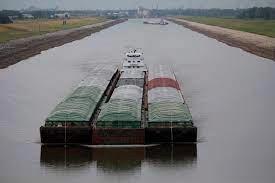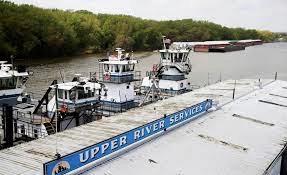 A prolonged drought has seriously impacted water depth in the Mississippi River, a major artery conveying grain from the Midwest to domestic livestock producers and to export terminals. The current problems with river transport are compounded by concerns over the rail system with one recalcitrant union extending a strike threat until after the mid-term election. Demand for coal in Europe, as a result of a cutoff in natural gas supply from Russia is also placing pressure on rail transport.
A prolonged drought has seriously impacted water depth in the Mississippi River, a major artery conveying grain from the Midwest to domestic livestock producers and to export terminals. The current problems with river transport are compounded by concerns over the rail system with one recalcitrant union extending a strike threat until after the mid-term election. Demand for coal in Europe, as a result of a cutoff in natural gas supply from Russia is also placing pressure on rail transport.
Decreased capacity on the Mississippi and its tributaries comes at a difficult time as farmers have commenced harvesting. It is estimated that half of all corn and soybeans harvested in the grain belt are moved by barges that also account for a third of coal transport.
During the last week of September, river traffic was halted with a backlog of 2,000 barges in 100 tows. When navigation was resumed, the Coastguard imposed sequential one-way traffic. Usually the Mississippi allows 12 feet of draft compared to the goal of the U.S. Army Corps of Engineers to allow 9 feet. Tows are now restricted to a maximum of 25 barges compared to over 30 under normal conditions.
 The widespread use of barges to ship agricultural commodities is demonstrated by the fact that a typical 15-barge tow carries the same freight as 200 rail cars or 1,000 semitrailers carrying 20-tons. A gallon of diesel fuel conveys 616-tons one mile on a barge tow compared to 150-ton miles for a semi-truck. The need for barges to reduce draft by taking on less cargo has contributed in part to doubled costs from 2021.
The widespread use of barges to ship agricultural commodities is demonstrated by the fact that a typical 15-barge tow carries the same freight as 200 rail cars or 1,000 semitrailers carrying 20-tons. A gallon of diesel fuel conveys 616-tons one mile on a barge tow compared to 150-ton miles for a semi-truck. The need for barges to reduce draft by taking on less cargo has contributed in part to doubled costs from 2021.
Ultimately, increased cost of river freight makes the U.S. less competitive in international commodity markets and raises the cost of feed, which is inevitably passed on to consumers. As with the Panama Canal, the Mississippi river system depends on adequate and regular rainfall to maintain water levels suitable for navigation.